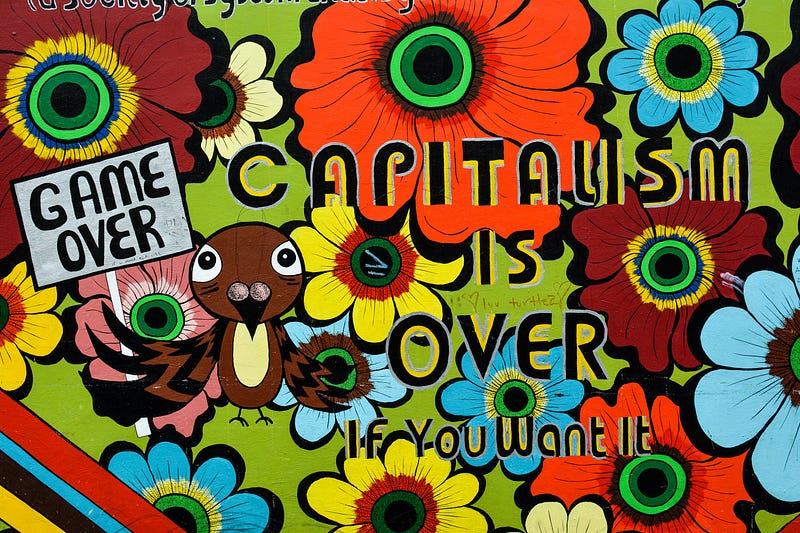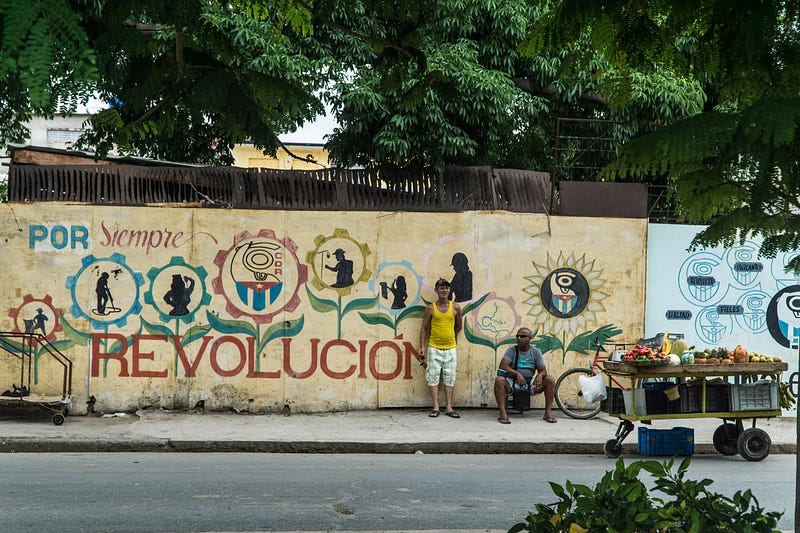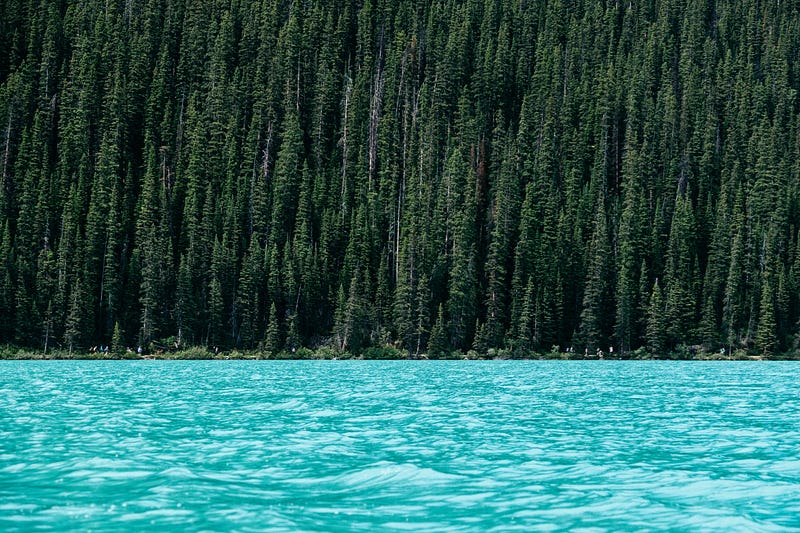What would a sane, sustainable world look like?

Philosopher Frederic Jameson wrote, “It has become easier to imagine the end of the world than the end of capitalism.”
Most of us share this mental block, and why wouldn’t we? For 150 years, we’ve been taught in the West that capitalism is not just the best system; it’s the only system that works. Only by unleashing men’s boundless greed for material wealth and allowing them to compete in a market place with minimal restrictions, will human society progress to its full potential.
The failure of the Communist systems in the USSR and China made capitalism look that much better. The nonstop celebration of material wealth in movies, print, and electronic media has reached full saturation; there’s no room for another vision of what life is about or how it could be organized.
Margaret Thatcher, former British Prime Minister and sworn enemy of the working class, used to repeat “There is no alternative” to neoliberal capitalism so often that she became known by its acronym TINA.
But, now we can see that capitalism doesn’t work either. Capitalism creates enormous wealth, but it’s like a fast car with no brakes or steering system. It’s a hell of a ride, but it’s bound to keep crashing.
True, the failures of communism caused hunger and state violence in Russia and China, but capitalism has its own failures, including world wars, depressions, and slavery. The difference is that the successes of capitalism are just as bad as the failures. It produces wealth by burning forests, digging up or paving over grasslands and wetlands, temperatures and sea levels rising, chemical and radioactive pollution killing and endangering every living thing on Earth in the name of progress. When material wealth becomes the highest priority, everything else goes to Hell.
The environmental disasters and starving people we see on our screens are what “unsustainability” means. Capitalism by definition is unsustainable, since it is based on constant change, growth, and progress, always seeking more. Capitalism, again by definition, values all things by how much money they can bring in the market, not by their intrinsic value.
If there truly were no alternative, we must all die, and soon. Fortunately, there are many alternatives both historic and modern. Even now, there are the hybrid social democracies in Scandinavia and the whatever-you-call-the-system in China, which are healthier and happier than any country in the neoliberal UK/US axis. People are finding old and new ways to share, and to consume less. Indigenous societies have been doing that for centuries.
Indigenous examples
Can we find alternatives to capitalism? We have teachers and leaders if we listen to indigenous voices. There are no indigenous capitalist societies. They build their lives around human relationships and the land, not around money, and they are sustainable. Some, like the New Guinea highlanders have lasted as long as 40,000 years that we know about. Indigenous people still have their wisdom and are willing to share it. We need to follow their leadership, and other brilliant thinkers can help.
Capitalism comes in many forms, so when I describe potential ways of replacing it, I will use “corporations” to stand for “capitalism.” I know they’re not the same, but corporate capitalism with its layers of bureaucracy and financialization is the dominant kind, and imagining life without corporations gives an approximation of the challenges and opportunities we face.
People rightfully wonder what we’d do without global capitalism. How would we eat without fruit from Mexico and meat from factory farms? Would we have to give up our cars and all move into small apartments? Or go back to the land and live in tents? Who would keep the electricity flowing and the Internet running?
Good questions. I certainly don’t know the answers, but I read and follow people who do. In this essay, I’ll look at a few of those ideas, many of them already in use in various places.
Some other crucial questions I won’t address here. Who will own the factories and other means of production? Who will run things if rich owners don’t? And even if we knew exactly the society we want, how could we possibly get there?
Those answers remain to be created. When you start imagining life without capitalism, you quickly realize that such changes would transform everything from the way we work and eat to how we organize our communities at all levels. Replacing neoliberal austerity systems with social democracies would make things a lot fairer and happier, but by itself wouldn’t do much to save the Earth.
In her book This Changes Everything, Naomi Klein wrote, “We are left with a stark choice: allow climate disruption to change everything about our world, or change pretty much everything about our economy to avoid that fate…But the actions that would give us the best chance of averting catastrophe — and would benefit the vast majority — are extremely threatening to an elite minority that has a stranglehold over our economy, our political process, and most of our major media outlets.”
Opposing such powerful forces might be an impossible dream, but I know one thing. Before you can cancel a system, you need at least a dream of what will replace it.
So, let’s start imagining. This story will deal with only two aspects: How will we support ourselves? How will we help heal the Earth? Just two of a thousand questions, but I list some resources at the end that answer more.
How will we support ourselves?
The end of capitalism will mean the end of millions of pointless or destructive jobs. The military and its industrial complex alone would shrink by millions. A lot of prison guards would be out of jobs. The kinds of work for which capitalists pay well will be harder to get.
But we don’t need well-paid work; we need real work that does some good. People don’t need stupid jobs; we need basic income to meet our needs. In a society without capitalism, a person’s livelihood will not depend on their work. Work will mean actions that make the world a better place: maintenance, repair, caregiving, etc.
Can you imagine working a 15-hour week and having that provide everything you need? Economists such as John Maynard Keynes have written since 1930 that people should not have to work more than that. We have had the technological capacity, but capitalists and their governments refuse to share the productivity the technologies create.
People can live on 15 hours a week if we are given a basic income (UBI) to bring us above poverty. Everybody in the world should have that.
What kinds of work would there be, though? A lot more of it would be in agriculture. In the 1830s, over 70% of work was agricultural. In the age of factory farming, it’s less than 8%. We could hire a lot of people to replace the farm machines and chemicals that destroy our land and water. We could all get work healing the damage industrial capitalism has wrought.
In his book, Bullshit Jobs, anthropologist David Graeber demonstrates that easily half of office work is pointless or worse. Whole industries such as finance do more harm than good and could be done away with. Closing down corporations would free a lot of people to do meaningful work growing food, creating culture, or caretaking people and planet.
The end of capitalism would mean the end of of interest-bearing debt. There is no reason most people should be in the kind of debt they’re in; capitalism’s relentless promotion of consumption puts them there. Kids are sent unsolicited credit cards when they go to college. The “American Dream” is a big house with a huge mortgage attached. Capitalism promotes debt on one hand, and demonizes debtors on the other.
“From an ecological point of view, the best thing people could do to save the planet is to work less.” David Graeber
People working and consuming less will reduce carbon emissions. We’ll pollute less. There will be fewer disposable plastic containers and less shipping things around the world. We’ll need smaller-scale, more local markets and businesses, freed from capitalism’s growth compulsion.

How will we heal the Land?
Why get rid of a system that provides so much wealth? Why not just try to reform it so that more share in the benefits? It’s because this is about so much more than people. It’s about the animals, plants, the living Earth. We need to remember what Lakota leader Mary Brave Bird said,
“The land is sacred. The land is our mother, the rivers our blood. Take our land away and we die.”
Whether we’re indigenous or not, we are part of Earth and Earth is part of us. Take the land away from us or kill it off and we’ll die. As Native American botanist Robin Kimmerer wrote, we can’t treat land like a warehouse full of products to sell. Healing land is the top priority, and we must embrace it.
Indigenous people (as a group) see themselves as part of Nature and so can better feel how industrial capitalism affects all living things. In their book The Red Deal, the Red Nation of indigenous activists has a 2-point plan to allow land to survive the climate crisis.
Point 1: Give land back to the Natives — They know how to take care of it. Let’s start by acknowledging the 386 treaties that have been broken and by giving some of that treaty land back.
Of course, the thousands of non-indigenous owners and millions of residents of occupied land will fear this, but maybe it can be worked out. The Yellowhead Institute, a Canadian First Nations-led research center says #LandBack doesn’t mean ceding ownership in all cases as much as controlling what is done with the land. The nature of land ownership must change. They say #LandBack means “reclaiming Indigenous jurisdiction” and “breathing life into rights and responsibilities.”

Point 2: focus on Caretaking — of land, life, water, and each other. Restoring marshes and swamps will purify water and protect against rising sea levels. Restored prairies and forests, and growing perma-culture farms will absorb a lot of carbon and produce lots of food. Protecting rainforests will save millions of lives and species. Consuming less stuff will give Nature a chance to replenish Herself. Getting ourselves out of the materialist madness of capitalism with the constant drive to consume and compete will heal us.
Obviously, capitalists and militarists aren’t going to like any of this; even though their families benefit too. We need to learn and think more about an Earth-based alternative to capitalism. Then organize for it.
Sources
Kimmerer, Robin Wall PhD- Braiding Sweetgrass Indigenous wisdom, scientific knowledge, and the wisdom of plants. Beautifully combines modern and traditional science. Most of what we need to know is in this book.
The Red Deal: Indigenous Action to Save Our Earth — a lot of history leading to a straightforward action plan.
Eisenstein, Charles The More Beautiful World Our Hearts Know Is Possible.-
Indigenous Environmental Network fights for Earth in non-revolutionary ways.
Johnson, Allan If Not Capitalism, What? A celebration of social democracy, some of which we could definitely use.
I put a list of indigenous organizations to support at the end of this article.
Thanks for reading! Follow me on Twitter, on Facebook or my blog The Inn by the Healing Path. Hire me for freelancing, editing, or tutoring on Linked In

David, you inspire me. Thank you for your clear writing–pinpointing the big picture.